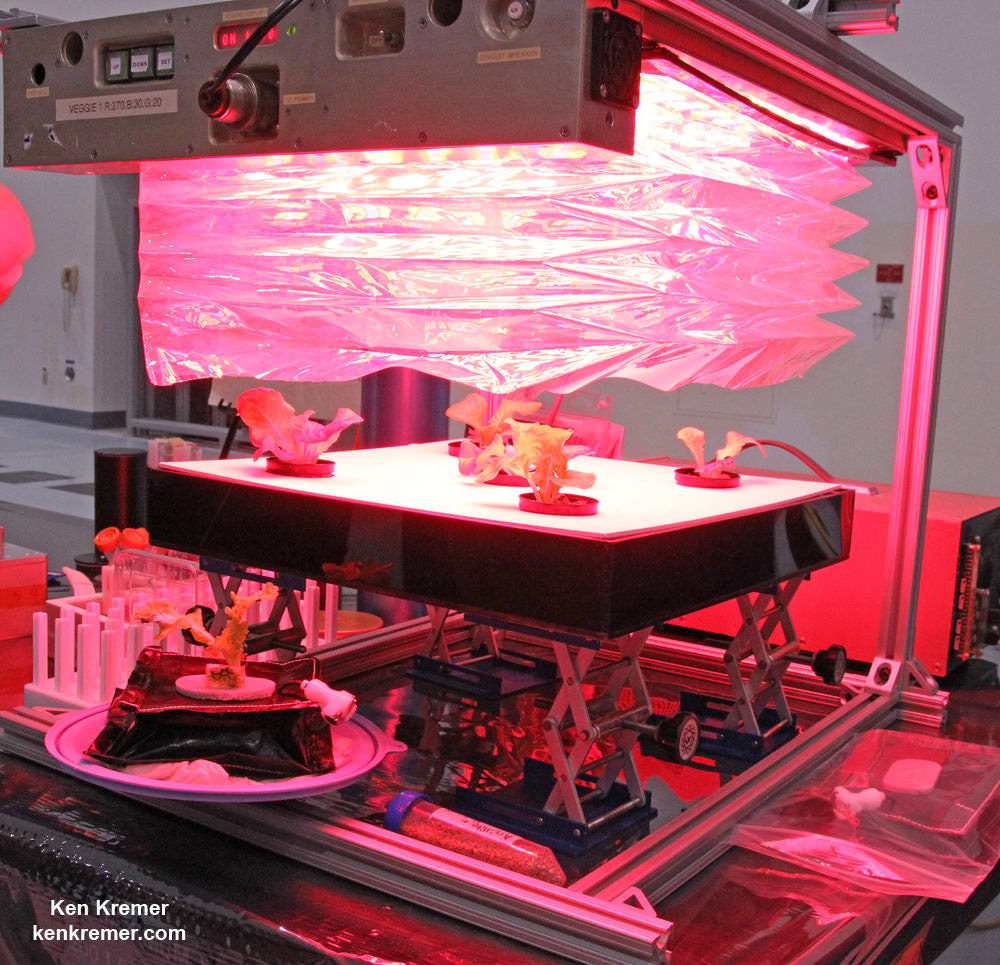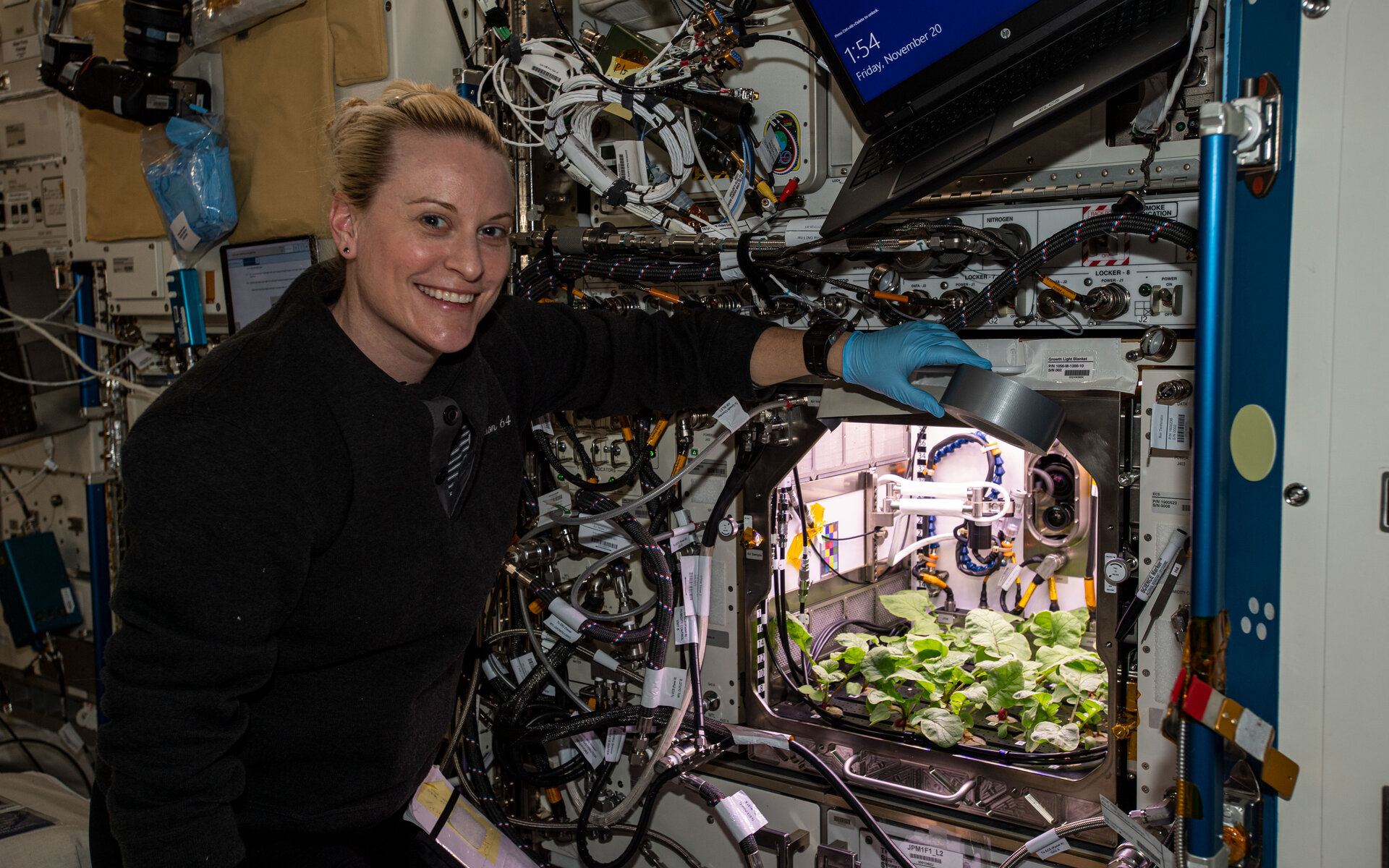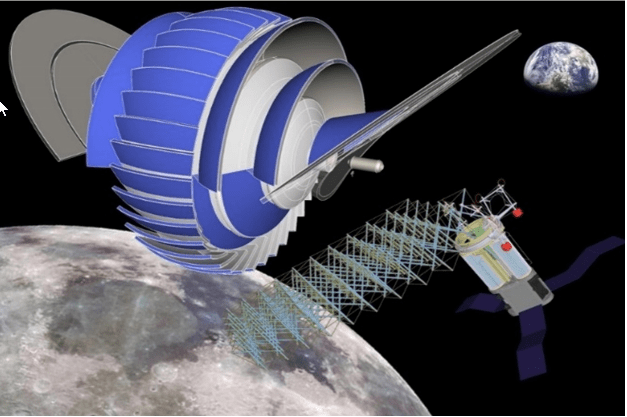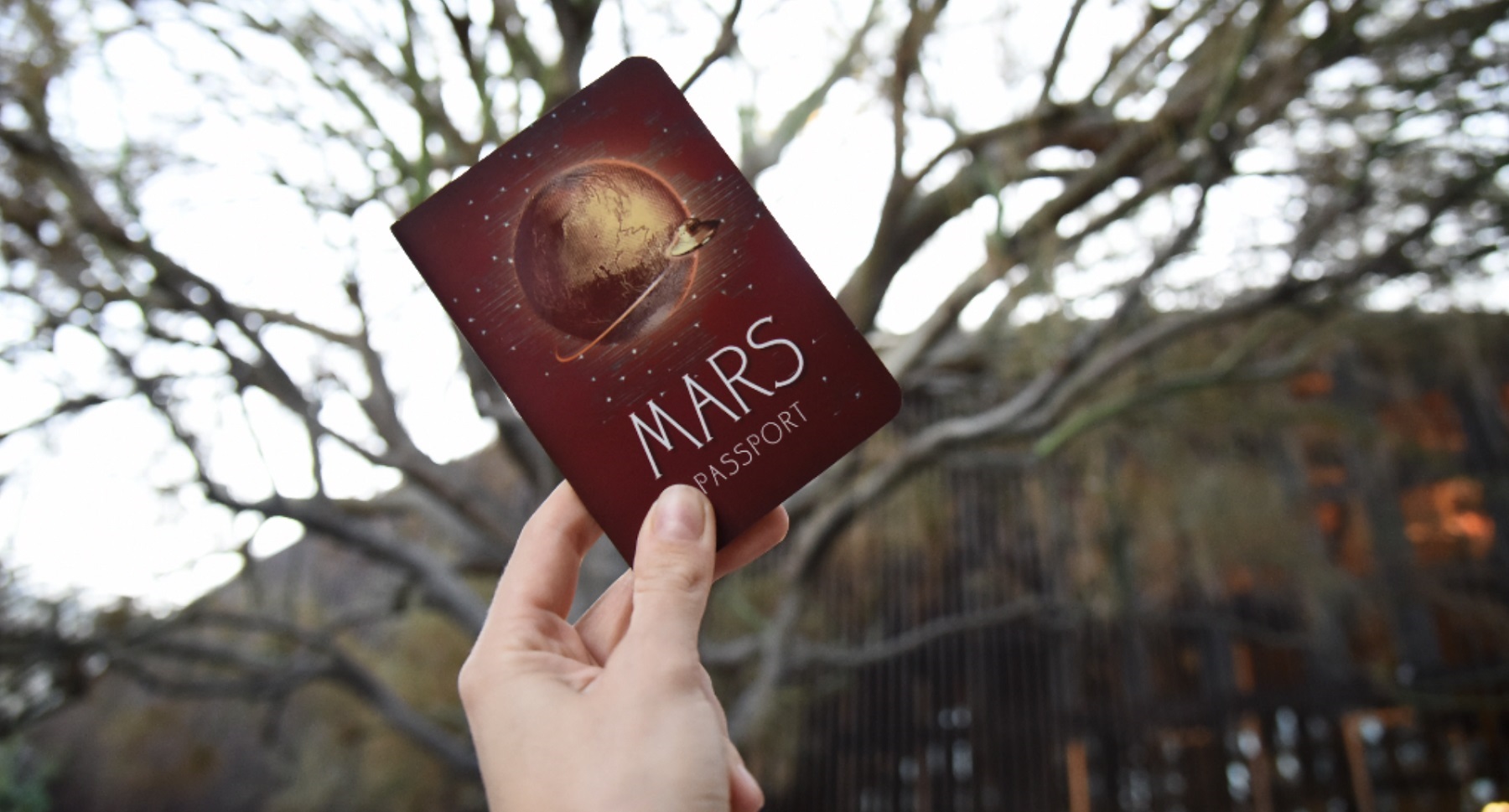Mars is a lifeless wasteland for more than one reason. Not only are the temperatures and lack of water difficult for life to deal with, the lack of a magnetic field means radiation constantly pummels the surface. If humans ever plan to spend prolonged periods of time on the red planet, they’ll need to support an additional type of life – crops. However, it appears that even greenhouses on the surface won’t do enough to protect their plants from the deadly radiation of the Martian surface, at least according to a new paper published by researchers at Wageningen University and the Delft University of Technology.
Continue reading “Greenhouses Probably won’t Work on Mars Because of Cosmic Radiation. Even the Plants Will Have to Live Underground”Attention Astronauts. Fresh Radishes Are Now On the Menu
Radishes are a very divisive food – most people either love them or hate them. However, they are very easy to grow, and have now been grown in one of the most inhospitable environments of all – the International Space Station.
Continue reading “Attention Astronauts. Fresh Radishes Are Now On the Menu”Design for a Space Habitat With Artificial Gravity That Could Be Grown Larger Over Time to Fit More People
There are two main approaches that humanity can take to living in space. The one more commonly portrayed is of us colonizing other celestial bodies such as the Moon and Mars. That approach comes with some major disadvantages, including dealing with toxic soils, clingy dust, and gravity wells.
The alternative is to build our own habitats. These could be located anywhere in the solar system, could be of any size that material science allows, and have different characteristics, such as temperature, climate, gravity, and even lengths of day. Unfortunately, we are still a very long way from building anything like a fully sized habitat. However, we are now one step closer to doing so with the release of a paper from a team at Texas A&M that describes a way to build an expandable space habitat of concentric cylinders that can house up to 8000 people.
Continue reading “Design for a Space Habitat With Artificial Gravity That Could Be Grown Larger Over Time to Fit More People”Behold! The Martian Menu, Courtesy of Mars City Design!
Today, there is no shortage of people who want to see humans go to Mars in their lifetime. Moreover, many want to go there themselves, and some even want to stay! It goes without saying that this proposed endeavor presents all kinds of challenges (the word Herculean comes to mind!) This is especially true when it comes to feeding future missions to Mars, not to mention permanent residents.
Regular resupply missions to Mars are simply not feasible, which means astronauts and settlers will have to grow their own food. To inspire ideas for how this could be done, and what the resulting meals would be like, Vera Mulyani and the organization she founded (Mars City Design) created the Martian Feast Gala. This annual event showcases what a Martian Menu could consist of and illustrates how every challenge is an opportunity to get creative!
Continue reading “Behold! The Martian Menu, Courtesy of Mars City Design!”Space Zinnias Rebound from Space Blight on Space Station

Zinnia experimental plants growing aboard the International Space Station (ISS) have staged a dramatic New Year’s comeback from a potential near death experience over the Christmas holidays, when traces of mold were discovered.
And it’s all thanks to the experienced green thumb of Space Station Commander Scott Kelly, channeling his “inner Mark Watney!” Continue reading “Space Zinnias Rebound from Space Blight on Space Station”
Yummy! ISS Astronauts Eat First Space-Grown Food
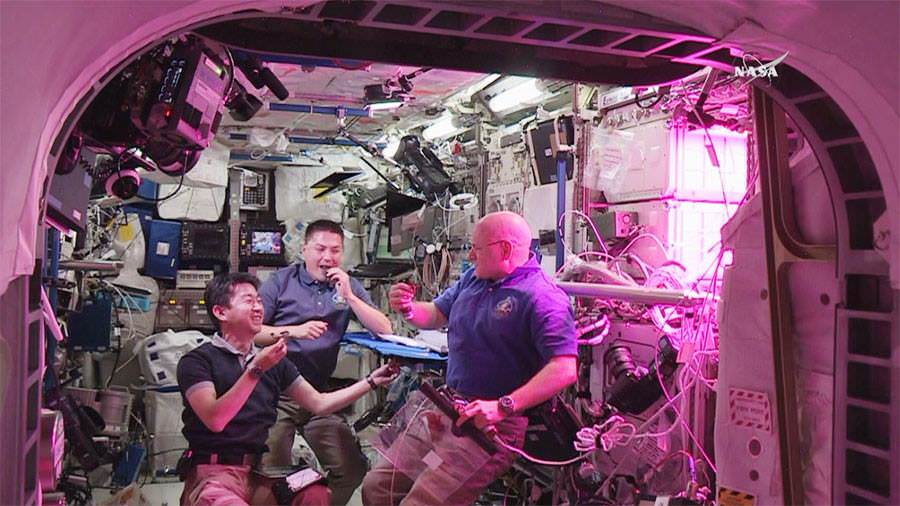
Video caption: That’s one small bite for a man, one giant leaf for mankind: NASA Astronauts Scott Kelly, Kjell Lindgren and Kimiya Yui of Japan sample the fruits of their labor after harvesting a crop of “Outredgeous” red romaine lettuce from the Veggie plant growth system on the International Space Station. Credit: NASA TV
Going where no astronauts have gone before, a trio of “space farmers” living aboard the International Space Station (ISS) have just become the first humans ever to eat food grown in space!
The gleeful munchers downed the freshly harvested crop of blood red colored “Outredgeous” red romaine lettuce salad during a live webcast today, Monday, August 10, direct from the Earth orbiting outpost soaring some 250 miles (400 km) above the home planet.
“Woo hoo ! …. Cheers!” exclaimed the eager Expedition 44 astronauts comprising Kjell Lindgren, Scott Kelly and Kimiya Yui, at the moment of truth, as they consumed the fruits of their own labor.
“It was one small bite for man, one giant leap for #NASAVEGGIE and our #JourneytoMars. #YearInSpace,” tweeted Kelly.
The momentous salad eating event took place at 12:26 EDT from beside the innovative and groundbreaking “Veggie” plant growth system, housed inside the European Space Agency’s Columbus laboratory located at the end of the US section of the ISS.
“That’s awesome!” said Lindgren with a broad smile – to the audible crunchy sounds of chewing on the freshly cut space lettuce.
“Tastes good!” replied Kelly, upon happily consuming the red leafed vegetable. He is now in the 5th month of his planned 1 Year mission aboard the ISS.
“Chomp! Our first veggies were harvested & consumed by astronauts in space!” tweeted NASA.
They all welcomed the opportunity to sample some freshly grown space produce from their miniature “ space farm.” Resident ISS crewmembers have been waiting for the “GO” to eat for some time.
“It tastes like arugula,” added Kelly, as they first tried the lettuce plain, as a control taste test of the virgin crop to get “the full effect.”
“It’s fresh,” Lindgren responded.
Then they doused quickly it with some oil and vinegar for flavor comparison.
“After trying the lettuce plain, @astro_kjell and @StationCDRKelly added oil & vinegar!” NASA tweeted.
Lindgren had carefully and methodically snipped away about half of the lettuce crop, on live NASA TV – which had grown to quite a size under the carefully maintained conditions inside “Veggie.”
He then cleaned “the leafy greens” by placing them between citric acid-based, food safe sanitizing wipes before the taste test.
After momentarily bagging the harvest, he distributed samples to his “tastemates” and the fun began.
“It’s wonderful to eat fresh food on the ISS, which is a lot of white and aluminum and it’s kind of a sterile environment,” said Kelly.
So this was quite different.
“It’s really fun to see green, growing things in here that we’re intentionally growing for sustenance. So we sure appreciate this payload and the opportunity to grow and eat and harvest these crops.”
The joyful trio saved some for the produce for their three Russian station colleagues to try later – Oleg Kononenko, Gennady Padalka and Mikhail Kornienko. Two of the Russian cosmonauts, Expedition 44 commander Padalka and Kelly’s 1 year crew mate Kornienko, were conducting a spacewalk today, simultaneously to the lettuce taste testing.
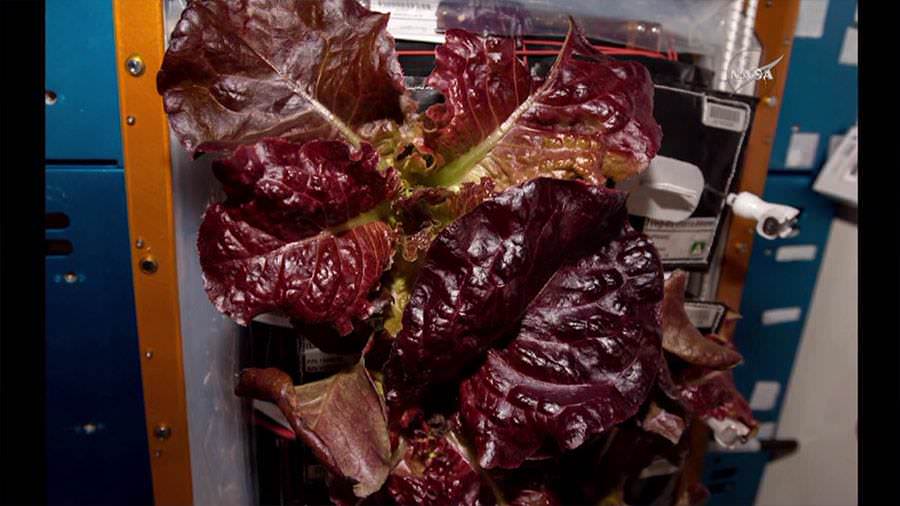
Another portion was set aside “to be packaged and frozen on the station until it can be returned to Earth for scientific analysis,” said NASA.
Although some vegetables have been grown before on the station, including prior crops of lettuce from “Veggie,” today marked the first time that any astronauts were “officially” granted “permission” to eat the fruits of their labor. Russian cosmonauts have eaten their station crops in the past. It’s a mystery whether any partner crewmates surreptitiously tasted some of the Russian produce.
And it not just for fun. In fact growing edible space food marks a significant new milestone towards enabling deep space human exploration, as explained by Kelly.
“Having lived on the space station for a while, I understand the logistical complexity of having people work in space for long periods and the supply chain that’s required to keep us going,” Kelly remarked.
“If we’re ever going to go to Mars someday, and we will, we’re going to have a spacecraft that is much more self sustainable with regard to its food supply.”
Experiments like these are critical for NASA’s plans to send humans on a “Journey to Mars” in the 2030s.
The “Journey to Mars” and back is likely to take well over two years and resupply is not possible. Crews will have to grow at least a portion of their own food and today’s experiment helps pave the human path to the Red Planet.
The “Veggie” experiment was developed by Orbital Technologies Corp. (ORBITEC) in Madison, Wisconsin.
The Veggie-01 apparatus was thoroughly tested at Kennedy before flight. It was delivered, along with two sets of pillows containing the romaine seeds and one set of zinnias, to the ISS by the SpaceX-3 Dragon cargo resupply mission launched in April 2014.
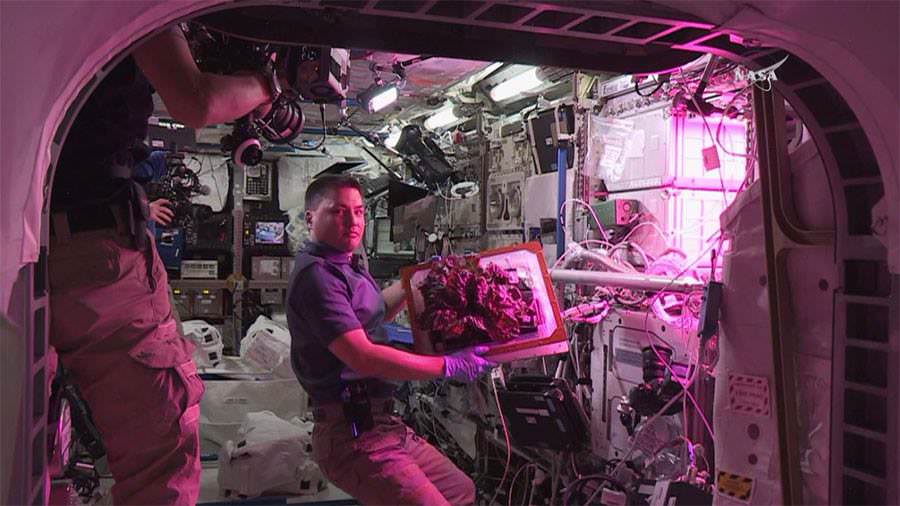
The lettuce crop inside the Veggie-01 plant pillows were activated by Kelly on July 8. They were grown for 33 days before being harvested today. The seeds had been stored dormant on the station for some 15 months since arriving aboard the SpaceX-3 Dragon, according to NASA.
The collapsible and expandable Veggie unit features a flat panel light bank that includes red, blue and green LEDs for plant growth and crew observation.
Stay tuned here for Ken’s continuing Earth and planetary science and human spaceflight news.
